Among the most frequently asked questions golfers want the answers to lies this one – how many dimples are on a golf ball? And it’s kind of an important one because the dimple pattern on a golf ball is what affects factors like lift, air resistance, trajectory, and distance.
And also because there’s no universal size that fits all. Hence, you need to understand everything about dimples if you want a set of golf balls that suit YOUR game.
Typically though, there are 300-500 dimples on any branded golf ball. For example, TaylorMade has 322 while Callaway has 332 dimples. Then there’s Titleist Pro V1, one of the best beginner golf balls, with 352 dimples.
So it’s unmistakable that dimples differ on golf balls from one brand to another. And not only the number of dimples, but also the shape, size (in a way), and more. Let’s find out!
In This Post
- What Are Dimples On Golf Balls and Why Do They Exist?
- So How Many Dimples Should There Be On Golf Balls?
- But Dimples Have Not Always Been Around, So When Did That Change?
- What Do Golf Ball Dimples Really Achieve?
- What Golf Ball Dimple Pattern Is Good For You?
- What Happens When There Are No Dimples On Golf Balls?
- Importance of Golf Ball Dimples – FAQs
- The Final Note
What Are Dimples On Golf Balls and Why Do They Exist?
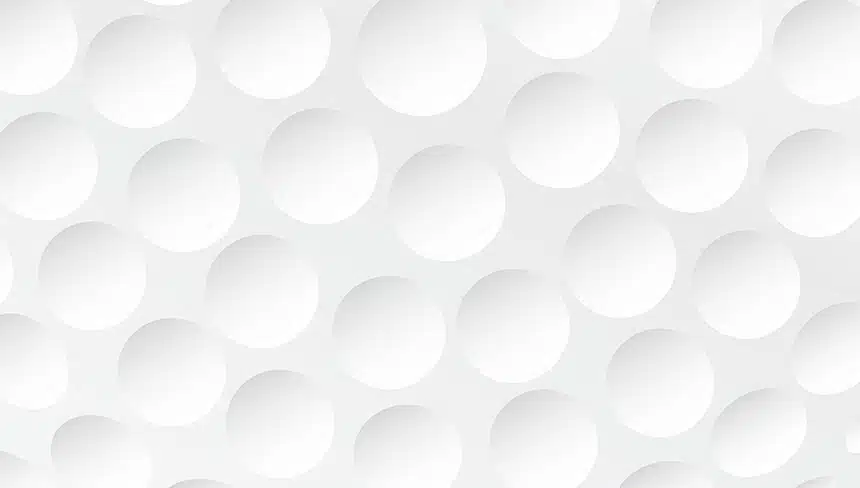
Why place dimples on golf balls anyway? In case that’s not obvious to you yet, let me make it clear that it’s not because of appearance or aesthetics. Real science goes into the dimple pattern of golf balls, much like golf ball compression. Here, allow me to explain why do golf balls have dimples.
Golf ball dimples are cup-like, tiny indentations on the surface, much like nicks and cuts. But, needless to say, unlike nicks and cuts, they are put in place strategically. The dents, when the golf ball is in flight, shake up the air surrounding them in order to reduce drag. No wonder they’re scientifically also called “turbulators.”
So the dimples produce a turbulent boundary, even though thin, of air, which clings to the surface of the golf ball. As a result, the air surrounding the ball flows smoothly, particularly at the back. Hence, the turbulent wake of the golf ball is decreased.
This would mean that a golf ball with dimples travels twice as long as one without. In the case of the latter, it flies and travels unpredictably. And this implies almost little to no hope when it comes to controlling a smooth-surfaced golf ball.
On the other hand, with dimples, the air flows over and around a larger surface area of the ball, thus a much, much smoother flight path.
Therefore, it’s only logical to deduct that the forces of drag and lift are largely determined by the depth of the dimples. A 0.001-inch depth change can also make a HUGE difference in the trajectory of the golf ball and how far it travels overall as well.
When we talk about lift, 50-percent of that is created as an inevitable consequence of the backward spinning motion of the ball. So when the golf ball spins like that, air pressure below is higher than on top of it. And this is what makes the ball rise high in the air.
Now at this point, if the ball has dimples, then these dimples tend to magnify the said effect by increasing the overall lift by 50-percent.
Another relevant thing that plays an important part here is the shape of these dimples. The traditional design consists of spherically-shaped dimples. However, now there are other shapes too that feature aerodynamics to take performance to a whole new level.
So How Many Dimples Should There Be On Golf Balls?
Once again I mention this, there is no universal size or one right answer to how many dimples. It actually depends on the manufacturer and also the model or series of the golf ball. Generally speaking, you will find anywhere from 300 to 500 dimples on golf balls.
For instance, Titleist Pro V1x features 328 dimples. As for its predecessor Pro V1 (how many dimples are on a Titleist Pro V1 golf ball), it has 352 dimples.
Speaking of which…
Golf Ball Dimples by TaylorMade, Callaway, Titleist, & More!!!
Be it TaylorMade golf balls, as in how many dimples on a TaylorMade golf ball or how many dimples on a Callaway golf ball or even how many dimples on a golf ball Titleist made, click here to get to know the dimple count of each model manufactured by every top golf ball brand.
But Dimples Have Not Always Been Around, So When Did That Change?
Dimples came about as a matter of chance, not a deliberate intention. During the 1800s, gutties (made of molded tree sap) were used as golf balls. And these, after they got worn out, produced a ball flight more consistent in comparison to the undamaged ones.
And then it didn’t take time for golf ball manufacturers to design golf balls with raised protrusions. I believe it was during the 1900s, at the beginning of that century to be more precise, that indentations replaced those raised protrusions. It was William Taylor, an English maker, who acquired the patent for this particular golf ball dimple pattern.
Other manufacturers followed suit, which led to the advancement of the whole dimple science and other golf ball technologies as well for maximizing crucial factors like control and distance.
What Do Golf Ball Dimples Really Achieve?
What is the purpose of dimples, meaning what are the benefits of golf ball dimples?
These “depressions” over the surface of the ball have an impact on its lift and travel distance. So let me tell you more specifically about the many benefits that dimples on golf balls provide.
They Minimize Air Resistance to Maximize Lift
Dimples are not put in place because they make the golf ball “look good” or anything of the sort. What golf ball dimples do instead is determine how far that ball is going to fly. And they do that with the help of reducing air resistance and increasing lift. That, in turn, lengthens the travel distance of the golf ball with greater stability (trajectory-wise).
I would also like to add here that the shape (depth), as well as alignment, of dimples is not the same in every golf ball. Generally, when spread across evenly and with precision (the ideal pattern consists of one shallow dimple and then one deep dimple), dimples never lead to jeopardizing distance. Even your shots, that way, don’t end up going right or left.
They Determine Trajectory and Distance
Even though dimples were accidentally found to affect trajectory and distance back in the mid-19th century, that was such a monumental discovery. When the smoothed surface of the golf balls, back then, got all dinged up, ball flight became straighter and the carry distance longer.
And the same thing happens now, although dimples are now indentations and not raised protrusions. Plus, they’re hammered into golf balls deliberately for a purpose – to create a consistent dimple pattern that improves trajectory and distance (through low drag and high lift).
Important to Note: Shallower dimples get the golf ball to launch higher whereas deeper dimples produce a lower lift.
What Golf Ball Dimple Pattern Is Good For You?
Since not every golf ball is designed with the same number or depth of dimples, it’s only natural to ask this particular question. That said, the size and even the whole pattern of golf ball dimples are specific to every single model or series. So keeping this in mind, what should you be looking for?
I think the right approach here would be to focus more on how the golf ball performs. For instance, you have the longest golf balls that prioritize adding extra yards, above all else. And just for that, they are infused with an “aerodynamic” dimple pattern.
Another great way to go about it is to choose between low-launch and high-launch golf balls. The same can be said about spin – high-spin or low-spin golf balls. Rest assured, all of these characteristics (launch, spin, and more) are partially determined by the size of the dimples and also the dimple pattern.
That’s why I said you should be focusing more on the performance characteristics or specifics instead of worrying about what the dimple pattern is all about.
What Happens When There Are No Dimples On Golf Balls?
Now that you know how a golf ball performs with dimples, what about when these strategically placed “indentations” are not added? Meaning how does a smooth-surfaced golf ball perform?
In comparison to golf balls with dimples that increase lift, the ones without generate a lower ball flight. The extra lift force in an upward direction brought about by dimples is caused through advanced aerodynamics that move air faster at the top, hence the pressure or drag is lowered.
It’s this combination of reduced drag and increased lift that works in the favor of golf ball dimples. And you just cannot expect this from a dimple-free construction.
Importance of Golf Ball Dimples – FAQs
How Large Are Golf Ball Dimples?
The depth of the dimples on a golf ball is what determines its size. The average or most common depth is around 0.010 inch. And of course, this varies from one model of a golf ball to the next. And so does the shape of these dimples.
Dimples are traditionally spherical shaped. But then there are brands that veer off the conventional path. For example, Callaway has also used the hexagon shape for dimples.
In the end, what matters the most is if the dimple pattern consists of a symmetrical structure. And of course, these dimples should stay constrained within a particular and acceptable range of depth and radius.
How Big Are Golf Balls?
Golf balls now need to be sized consistently, no matter the model or manufacturer. Based on official rules, golf ball diameter shouldn’t exceed 1.680 inches (42.67 millimeters).
How Light Or Heavy Should A Golf Ball Be?
The weight of golf balls has certainly not remained constant throughout history. Back in the 1800s and even 1900s, the size, shape, and weight were never consistent factors.
But that’s not the case today with modern golf. USGA (United States Golf Association) has established a standard in terms of golf weight – it should not exceed 1.620 ounces (45.93 grams).
Which Golf Balls Have the Most Dimples?
Dimples directly affect ball flight. The higher the number of dimples on a golf ball, the greater the drag over its surface. And this means a lower trajectory. Thus, more dimples are not necessarily a good thing.
Generally, the number is anywhere between 300 and 500 dimples. American golf balls, more often than not, come with 336 dimples. While how many dimples on a British golf ball, they have 330 dimples.
As for the highest number of dimples, that would be Ultra 500 Series Golf Balls (500 dimples). Then you also have Nike and Maxfli golf balls with +400 dimples. In terms of more widely accepted golf balls with comparatively more dimples yet not too high, Titleist Pro V1 (352 dimples) and Titleist Pro V1x (328 dimples) are very popular.
The Final Note
So these surface indentations or dimples determine how the golf ball is going to travel. More specifically, how high, straight, and long will be the ball flight. All of these characteristics, as a matter of fact even spin and not only launch, are largely dependent on the shape, size, and the number of dimples on the golf ball.
Typically, the number starts from 300 to 500. And if you narrow it down further, then between 320 and 420 dimples. But mostly, the number remains within the 300 range.
Almost every top brand tells you all about the dimple pattern and count. The latter is sometimes printed on the golf ball itself. And if not, you can always check the packaging, product description, or on the manufacturer’s website.

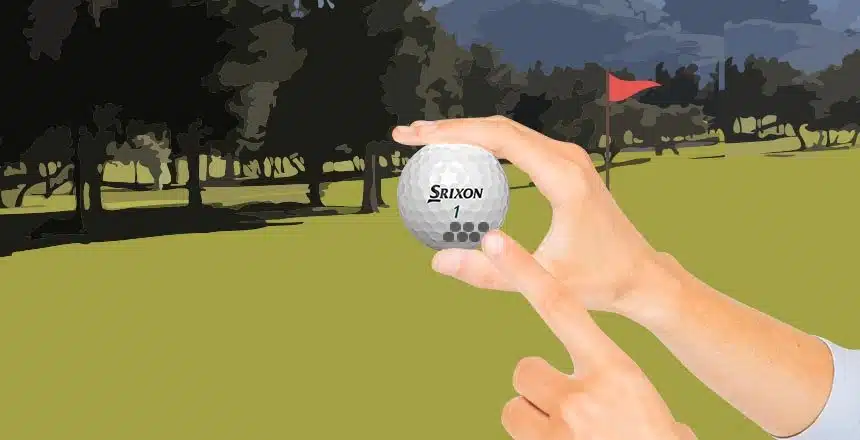

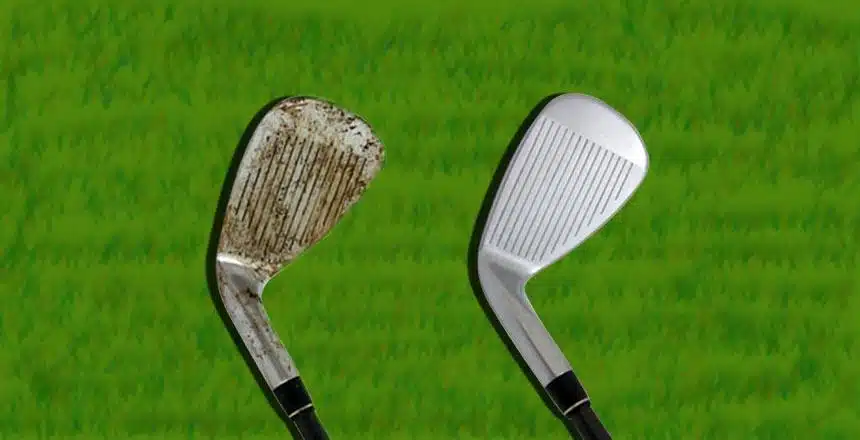
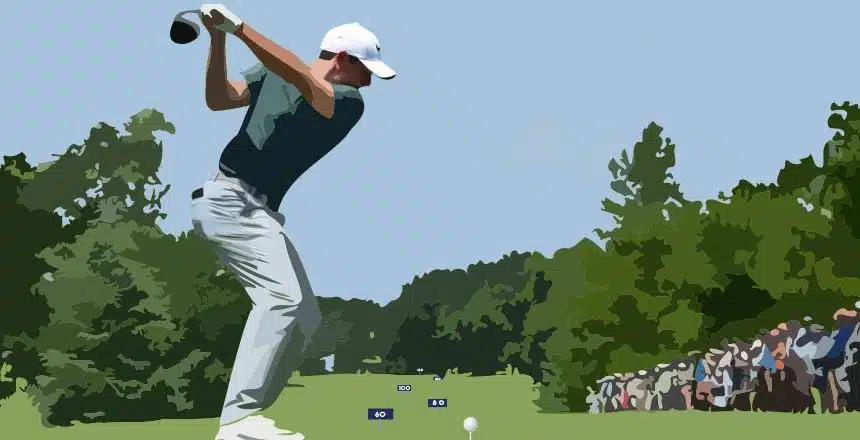
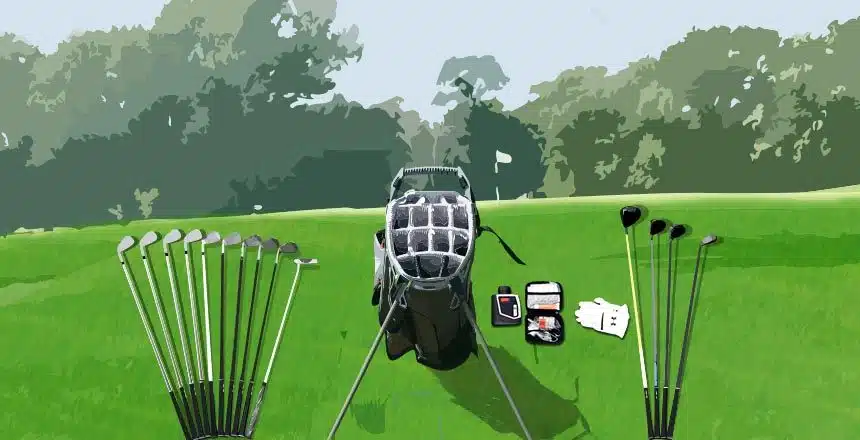
Instead, focus on the golf ball’s performance characteristics. For example, it’s more important to know if a ball has high or low launch performance, or if it provides a ton of spin or as little spin as possible. Many of a golf ball’s characteristics are, at least in part, a result of the ball’s dimple pattern and dimple sizes. But it’s best to pay attention to the performance specifics themselves, rather than worry about the dimple pattern that contributed to them. We’ve dipped a little bit into the physics behind how golf ball dimples work and the importance of golf ball dimples to performance. But what would happen if a golf ball had no dimples at all, or if dimples covered only part of the golf ball?
I agree with what you said about the performance characteristics of a golf ball. That’s precisely why I’ve also discussed “What Happens When There Are No Dimples On Golf Balls?” in the article. High/low launch and high/low spin are also very crucial performance-driven factors that are mentioned under “What Golf Ball Dimple Pattern Is Good For You?”
They mentioned what happens when there’s no dimples in the article. Doesn’t how the ball is hit matter most and the ball that is used compliment the follow through with lift, speed, spin and any other type of result such as backspin?
The article was pretty thorough and in-depth on the subject they were discussing and it was very informative. Really enjoyed the article.
They mentioned what happens when there’s no dimples in the article. Doesn’t how the ball is hit matter most and the ball that is used compliment the follow through with lift, speed, spin and any other type of result such as backspin?
The article was pretty thorough and in-depth on the subject they were discussing and it was very informative. Really enjoyed the article.